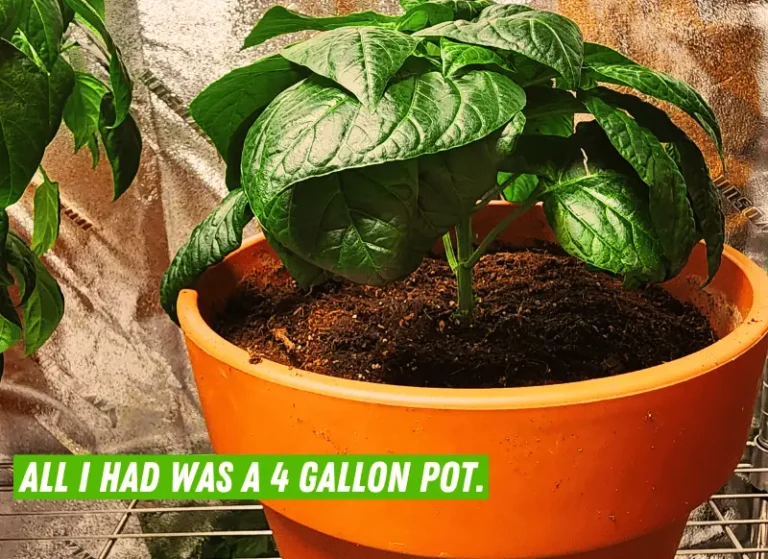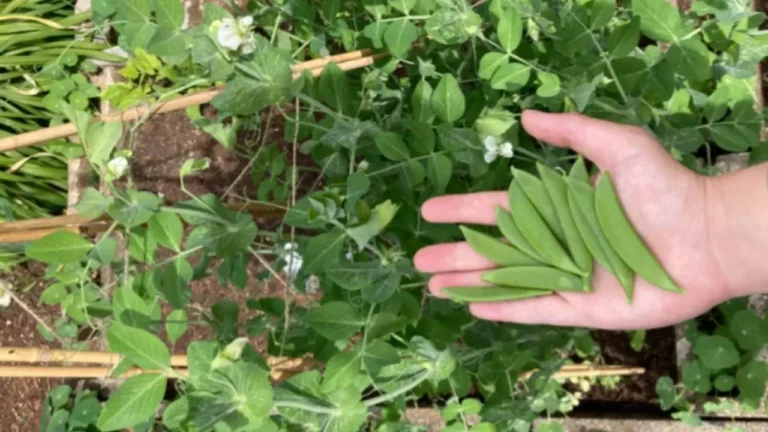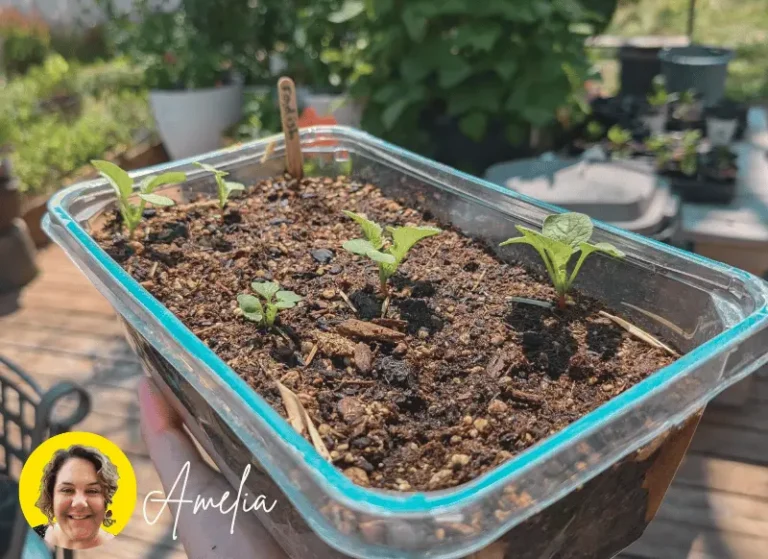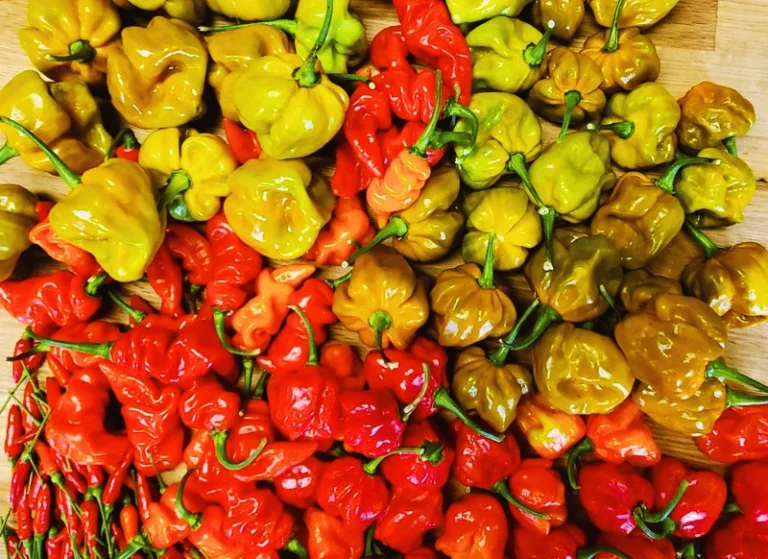How Can I Grow Beets Perfectly: An Ultimate Guide
You or others may be confused about beets and beetroot, but don’t worry they are similar! It is okay to call them both beets and beetroot. “Beets have amazing health benefits, so plant them in your garden,” my grandfather used to say when I watched him plant beets many years ago. Growing beets has proven to be one of my most rewarding gardening experiences. These vibrant root vegetables are full of nutrients and can be used in various ways in the kitchen, from pickling to salad plates.
They’re also very easy to grow, so gardeners of any level of experience can utilize them. In this guide, I will explain common problems, share ideas from my garden, and highlight healthy ways to grow beets. Don’t forget to bookmark this article; it has all the information you need to grow delicious beets for many years. So let’s move and grow your beets!

What are the Benefits and Uses of Beets?
Beets are an absolute kitchen and garden gem, thanks to their incredible combination of natural benefits, culinary versatility, and health benefits. They are a basis in my garden because, for many years, I’ve found them to be among the easiest and most profitable harvests to grow. There are many uses for both the root and the leaves, which are rich in nutrients.
Nutritional and Health Benefits
There is no doubt that beets are a nutritional treasure trove, full of minerals, vitamins, and antioxidants. Roots are well known for their bright pink juice, and they are rich in folic acid, an essential nutrient for cell growth and repair. With a wealth of nutrients and minerals, the roots and leaves are powerful, healthful energies.
While leafy greens include minerals A, C, and K along with iron and potassium, the roots are especially rich in folate, which is essential for cell growth and function. Including beets in your diet can promote wealth and overall health. Beets are widely known for their ability to lower blood pressure, which is an important warning sign for cardiac heart disease.
Systolic and diastolic heartbeats can be significantly reduced by consuming beetroot juice or including beets in your diet. Plus, the antioxidants in beets may provide immunity against disease, reduce stress, and support mental health, especially as we age.
Culinary Versatility
In my years of growing beets, I’ve found that the root and greens are incredibly versatile. The root’s earthy sweetness mixes well with a variety of flavors and can be grilled, boiled, or crushed raw into platters of salads. The chard-looking greens can be sautéed like spinach or kale or eaten raw in thin strips.
Packed with vitamins A, C, and K, beet greens are a great addition to any cuisine. Beets add variety, taste, and nutrition to drinks like soups, pickles, and juices. Because of their versatility, beets can be used in every meal, from pickled to platters of salads and squeezes.
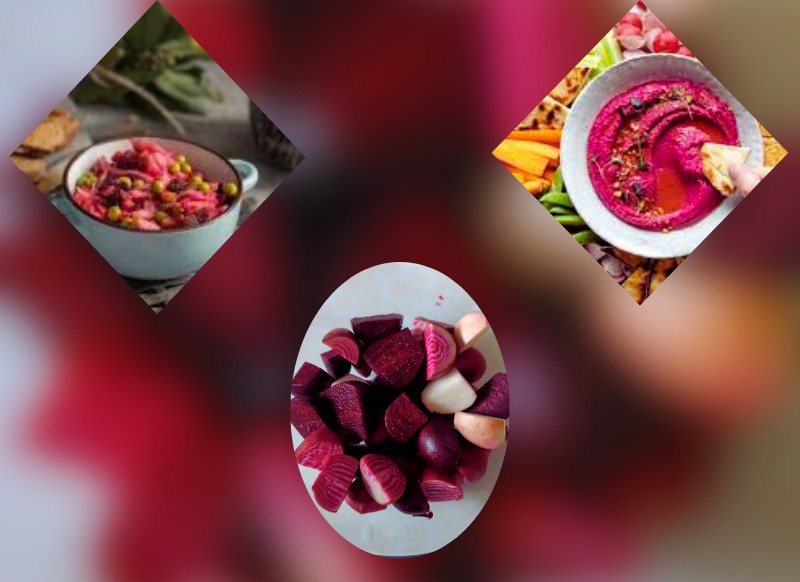
Environmental and Gardening Benefits
Beets are an easy-to-maintain crop, perfect for tiny spaces and inexperienced gardeners. They grow quickly in a variety of climates and require little effort, making them environmentally friendly choices. In years to come, I’ve found that their deep roots help move air throughout the soil, and they make wonderful companions for other veggies in the garden.
Varieties of Beets
After knowing about its health and environmental benefits, I saw most expert gardeners or beginners want to grow beets in their gardens, and I am also excited and happy to guide you guys. But first, you have to choose the right variety of beets. The options are as broad as they are beautiful when it comes to choosing the ideal beet variety for your garden.
Over time, different varieties give unique tastes, looks, and benefits, so it’s important to choose the one that best suits your needs, tastes, and growing situation. You can choose a beet variety based on your preference for simplicity of growth, aesthetic appeal, or culinary versatility.
- Red Beets: The most common and widely grown beets are red types. With their rich, vibrant variety and deep, strong flavors, varieties like Detroit Dim Red and Red Ace are classy for a reason. They grow very well in Utah’s climate and are perfect for anything from pickling to cooking.
- Golden Beets: Known for their typically sweet taste as well as their quality to not stain, golden beets are a favorite for cooking and on salad dishes. Golden is an ideal variety that brightens any dish with its striking yellow color and amazing taste.
- Chioggia Beets: Known for their stunning candy-cane stripes, Chioggia beets are not only visually stunning but also delicious. They are a great option for raw dishes like salads or thin slicing because they are often sweeter and have a little softer flavor than their red peers.
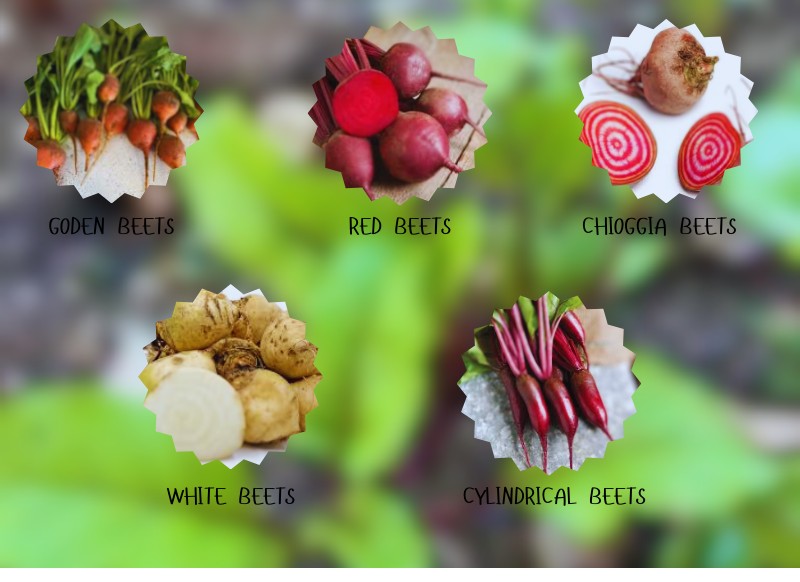
- White Beets: White beets are a versatile option for gardeners who require something unique because of their milder flavor and lack of coloration. They can be more difficult to find, but their smooth surface and sweetness make them worthy of the effort.
- Cylindrical Beets: Tube-shaped varieties like Cylindra are your best bet if you’re a die-hard fan of accuracy and consistency. These beets fill in long, stable shapes that are perfect for cooking or canning as they cut easily.
Choose varieties based on climate and taste
Check your local growing conditions and tastes when selecting a variety. In Utah’s climate, most beets grow, especially when the soil is well-prepared and watered. Using a consistent watering schedule will prevent beetroots from growing strongly. Beets grow well in moist, well-drained soil. There is a beet variety that will thrive in the garden and delight your taste buds, no matter whether you are drawn to the bright sweetness of golden, the superb wealth of Detroit Dim Red, or the visual attractiveness of Chioggia.
Prepare Your Soil
The first thing you need to do when you visit the garden or any place where you want to grow vegetables is to prepare the soil. You will not receive a good harvest if you do not properly prepare the soil. Before growing beets, make sure the soil is ready for cultivation. Beets can only be harvested successfully if the soil is prepared properly.
I learned throughout the years that the best results come from loose, well-drained soil that is enhanced with compost. Start by removing rocks, sticks, and other trash so that roots can spread out easily. Consolidate fine plant stuff like grass or leaves for extra nutrients, and work or spade the soil down to a depth of 8 to 10 inches.
Choose a pH level of 6.0 to 7.0, check your soil, and add sulfur or lime as required. Beets grow on soil that is slightly acidic to neutral, and adding fertilizer or seaweed extract provides essential boron to prevent black heart.When planting, make 12-inch creases and separate the seeds by 1-2 inches before lightly covering them with free soil.
The two main areas of strength are to use fungicide-treated seeds and to water them gently. Beets take 7 to 14 days to germinate, and timed plantings provide a constant supply. For much better results, avoid compaction, keep the soil loose, and try companion planting with lettuce or onions.

Planting Beets from Seeds step-by-step guide
When I surveyed on social media platforms like Reddit and Quora a while back, I found that people were not sure about when to plant beets, which caused their crops to be damaged or become weak. So I decided to share this important tip or advice with my fellow gardeners: As a cool-season vegetable, beets (or beetroot) should never be planted in hot weather. I am saying this based on my personal experience. Let’s move and learn how to grow beets from seeds.
Location and timing
I can tell you from my long planting experience that the location and timing of beet planting are important for a successful harvest. Because they grow in cool weather, beets are a great crop to sow in late winter or early spring. In late winter, usually around mid-April, when the last frost has melted, I usually start beets when the soil is suitable. Also, you can set them up in the fall, around 8 to 10 weeks before the main expected frost.
In terms of location, beets prefer well-drained, fertile soil, so I always make sure the spot I choose has good drainage. They thrive in full sun, but they tolerate partial shade. Because beets have deep roots that can reach a length of 36 to 48 inches, the soil should be loose and not disturbed. Plus, because their roots can eat up space and nutrients, I try to avoid planting them next to trees or bushes.
Avoiding hot weather is a must while growing beets because they will not thrive in such conditions. Should you live in an area with long summers, I advise starting your beet seeds early in the growing season to avoid the mid-year heat, or even think about using row covers to protect them from hot weather.
Sowing Strategy
Beet seeds will benefit from soaking because, as I have learned over the years, soaking them for 24 hours before planting increases germination. Even though it’s a small step, it has a big impact on how quickly the seeds grow. Plant the seeds 1 to 2 inches apart and about ½ inch deep in the soil. To give the plants enough space to grow, I usually sow the seeds in rows that are 12 to 18 inches away.
I carefully cover the seeds with a thin layer of soil after planting and water them carefully to ensure the soil keeps moist. I make sure the soil is consistently moist during the early stages of growth since beets require consistent moisture for proper germination.
Plus, while beets are quite flexible, they do need some attention during the growing season. I use progressive planting for nonstop harvests, so I plant fresh bunches of seeds every two to three weeks. This ensures an ongoing supply of beets throughout the growing season, which has worked well for me.
Like me, you may harvest a good beet crop each year if you follow these steps carefully and give special attention to the location and timing. Guys, here I am going to mention this visual guide so you can easily watch all the steps:
Growing Beets without Seeds/Growing Beetroots from beets
I’ve tried and tested the simple and rewarding procedure of growing beets without seeds. Start with fresh beetroots whose green tops have been attached. If you want to make sure some root, cut around 1 inch below the leaves, which are still attached. Put the tips in a shallow water container, making sure the roots drop but the leaves remain above the level of the water.
Place the container in a sunny area, like a windowsill, and replace the water as scheduled. After a few days, new leaves and tiny roots will begin to grow. Move the tops to a garden bed or container to nutrient-rich, well-drained soil once the roots are about 1 to 2 inches long. Be sure to keep the leaves above the soil and cover the roots. For further growth, add compost. You’ll have beets growing without seeds if you’re patient!
Growing Spaces For Beetroots
Growing beets in containers and raised beds has been a satisfying experience in my gardening journey. Both strategies have special benefits, especially for people who have small space or hard soil conditions.
Grow Beets in Containers:
If you have limited space or require more control over soil conditions, growing beets in containers is a great option. For the roots to grow freely, choose a container that is at least 10 inches deep. The container you use can be as long or as wide as required, depending on how many beets you need to plant, but make sure they are spaced about 3 inches apart.
Put well-draining, nutrient-rich soil into the container and adjust the pH to between 6.0 and 7.0. When using garden soil, think about using manure or natural fertilizer to improve the soil’s quality. To ensure constant growth, place the container in a sunny area, water it frequently, and check the moisture levels.

In Raised Beds
Raised beds provide more control over soil quality and provide excellent drainage. Organic soil that drains well is ideal for beets. To improve richness, I combine fertilizer before planting. Plant seeds in rows spaced 12 to 18 inches apart, 1/2 inch deep, and 1 to 2 inches apart. This spreading ensures good airflow and space for bulb growth. Plus, raised beds warm up more quickly in the spring, which gives beets an early start in cooler regions.
In both setups, you must check for bugs and make sure the plants get at least 6 hours of sunlight per day. These methods have let me regularly enjoy rich beet harvests, whether they are in raised beds in the garden or containers on the balcony.
You may find this video helpful as a visual guide for growing beets in raised beds:
Watering and Fertilizing
Some of the most important things you need to do to make sure beets grow flavorfully and healthily are watering and fertilizing them. Here is a thorough guide based on my experience to help you achieve your best results.
Watering
Beets grow in consistently moist soil but can’t tolerate flooding. Plan for a weekly watering of around one inch, including rainfall. In hotter climates, you may need to water more frequently to prevent the soil from drying out, especially during hot weather. Mulching the space around the plants can help retain moisture and control soil temperature, preventing the roots from becoming too strong. Check out for overwatering; signs include yellowing leaves or stunted growth, which signifies the roots may be suffering from too much moisture.

Fertilizing
You should start fertilizing around two weeks after the seedlings sprout if your soil isn’t naturally high in organic matter. For a consistent supply of nutrients, organic options such as bone meal or compost tea are excellent. For strong root growth, beets need a fertilizer that is balanced and focuses on phosphorus. Carefully follow the product’s instructions to prevent overfertilizing, which can result in weakened roots and excessive growth of leaves.
Keep watching for any signs of nutrient deficiencies, such as pale or yellow leaves that may signify a lack of potassium, phosphorus, or nitrogen. To fix this, apply a specific vegetable fertilizer or mix the soil with natural matter. You can help your beets grow sweet and soft and ensure a successful harvest each season by keeping the soil properly fed and consistently moist.
Care and Maintenance: Pests and diseases
Beet care requires more than just watering and fertilizing; preventing diseases and pests is important to a crop’s health. Based on years of experience, here are some tips for effectively dealing with typical challenges:
- Fungal Diseases: Parasitic problems like leaf spots and root loss can negatively impact beets. These are frequently caused by smaller or overly damp soil. I make sure the soil is well-draining and chilly, and I shift crops every two or three years to prevent this. If parasite problems appear, I remove affected plants right away and use a suitable fungicide.
- Pests Issues: Common pests that damage foliage and stunt growth include aphids, flea beetles, and leaf miners. To naturally reduce bugs in my garden, I use common predators like ladybugs and give affected areas a soapy water shower. Also, keeping the area free of weeds reduces their living area.
- Snails and Slugs: Snails and slugs often target beets, especially when they are seedlings. To the best of what I know, these problems can be avoided by using barriers such as crushed eggshells around the plants. To keep excessive pervasions at a distance, grow beets in raised beds or think about using natural controllers like nematodes. Getting these feeders at night can also be aided by evening watches with a flashlight.
- Bird Protection: Beet seedlings can be destroyed by birds plucking them from the ground. Until the seedlings are fully grown, I’ve found that covering them with cotton or fine nets improves their safety.
It is possible to protect your beet crop from pests and diseases and ensure a good harvest with regular watching and a little effort.
Troubleshooting Common Problems
A lot of problems can arise if plants are not properly cared for. As mentioned earlier, plants might be destroyed if beets are not sown at the proper time. Lack of nutrients, too much water, or insufficient water may be causing this. That’s why proper care is very important.
Yellow Leaves: Often, yellowing leaves show an issue with irrigation or nutrients. When my beets began to yellow, I noticed that the soil was either too dry or deficient in vitamins. The problem was quickly resolved by ensuring consistent moisture and using high-quality vegetable manure. Mulching also retains soil moisture and maintains plant health.
Lack of Vegetable Production: A lack of sunlight or overcrowding is often the reason why beets fail to grow roots. Make sure to plant beets in a sunny location because they thrive in 6 to 8 hours of direct sunlight. As far as I can determine, root growth has begun through pruning the plants early and ensuring proper division (about 3 inches apart). Proper watering also plays a crucial role in supporting the roots’ proper growth.
You can make sure your beets grow healthily and productively by taking quick care of these common issues.
When and how to harvest
A unique feature of beet growth is harvesting, and timing is important for getting the best results. Depending on the variety, beets are often ready to harvest 60–80 days after sowing. When they reach a distance of about 1/2 to 2 inches across, the roots start to grow. As soon as the beetroot’s stems start to peek through the soil, you’ll know they’re ready to be picked up. To truly see their size, carefully brush away some dirt if you can’t see them. For an ideal surface, the roots should be approximately 3 inches in size; larger roots tend to grow more sinewy and strong.
When beet greens are 3 to 4 inches tall, you can start harvesting them. These tiny leaves are great for enhancing the flavor of food and may be eaten both raw or cooked. The plant requires the leaves for ongoing growth of roots, so take care not to remove them fully.
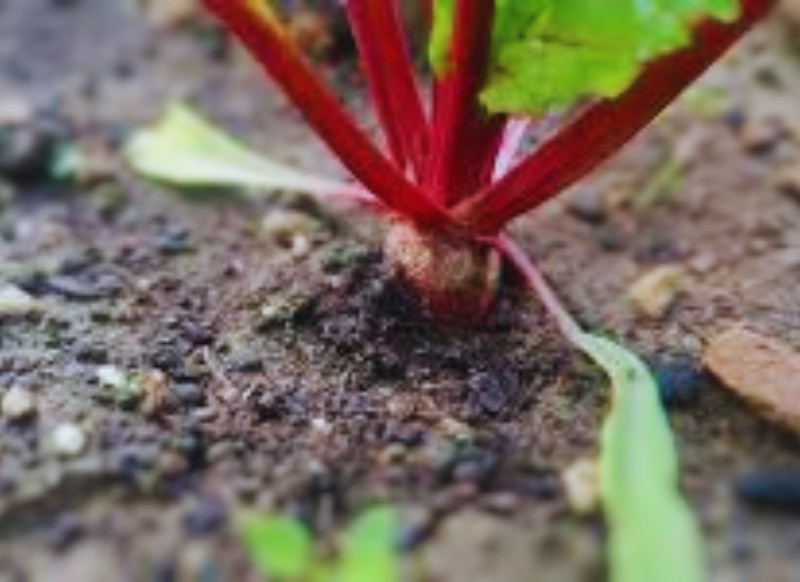
To harvest the beets, loosen the soil with a digging fork and gently pull the plants by their tips. To avoid draining while cooking, trim off the leaves, leaving about 1 inch of stem attached. Store them in a cool, dark place, possibly around 32°F with 95% stickiness, and they should last for two to four months. Beets can be frozen, pickled, or canned for longer usage, or they can be stored in a root cellar. You can keep fresh beets in a frozen box for up to seven days.
Some Pro Tips
1:
Cover your beets with organic mulch, like straw or grass clippings, to help save moisture, keep the soil cool, and lessen competition from weeds.
2:
During the growth season, use fish emulsion or compost tea as a natural liquid fertilizer to give your plants a boost in nutrients without going overboard.
3:
Particularly in warmer climates, planting beets next to fast-growing crops like radishes can help make the most of available space and keep the soil cooler for beetroots.
Conclusion
In the end, I want to say that if you follow a few basic guidelines, growing beets may be an enjoyable task. Such as picking the right location, planting at the ideal time, making sure to water your plants frequently, and providing the proper attention for your plants. Enjoy the process of seeing your beets become robust and healthy, and remember to keep a lookout for pests and diseases.
I suggest you experiment with growing multiple beet types to see which ones suit the best to your environment and space. Every garden is unique, and sharing your experiences can be an excellent way to learn and improve! Please feel free to leave a comment below with any questions or advice you may have; I would be extremely interested in knowing how your beet-growing journey turns out! Happy gardening!

About Author
Welcome! I’m Amelia, your dedicated gardener and passionate advocate for all things green.Explore my gardening journey through beautiful photos, insightful articles, and helpful tips. If you have any questions or just want to connect, feel free to drop me a note. Let’s grow together!

